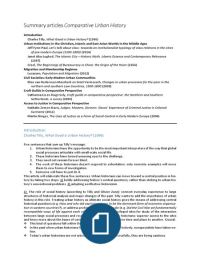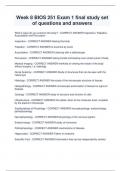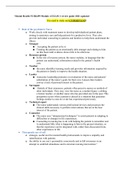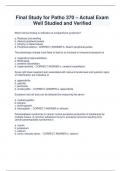Samenvatting
Samenvatting artikelen Comparative Urban History deeltentamen I
- Instelling
- Universiteit Leiden (UL)
Samenvatting van de opgegeven artikelen voor het eerste deeltentamen voor Comparative Urban History. Vooral gebaseerd op de behandelde stof uit de colleges, maar verder ook zeer uitgebreid vanuit de artikelen zelf. In het Engels geschreven om 'vertaalproblemen' te voorkomen.
[Meer zien]













